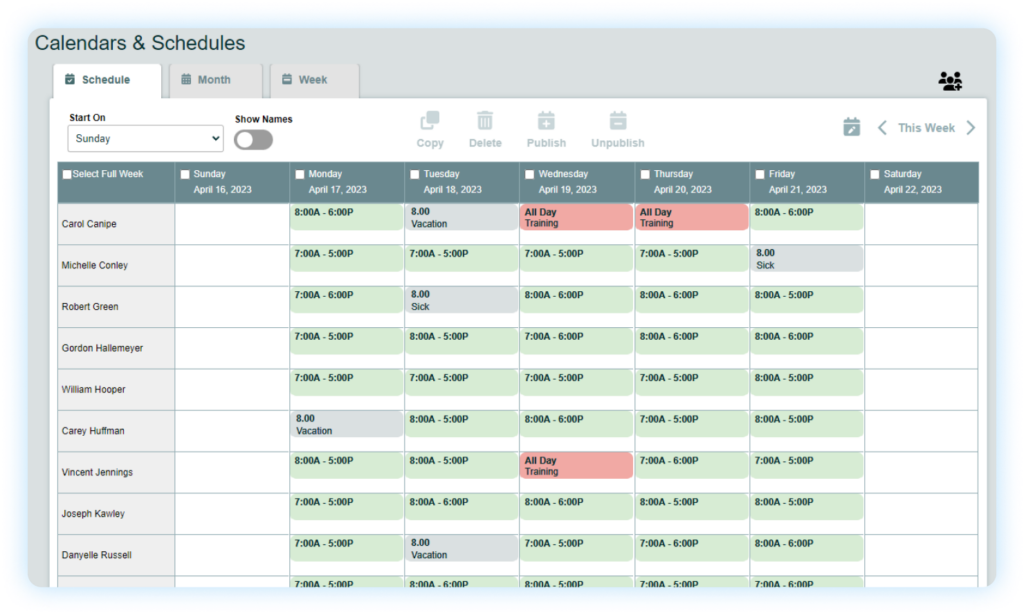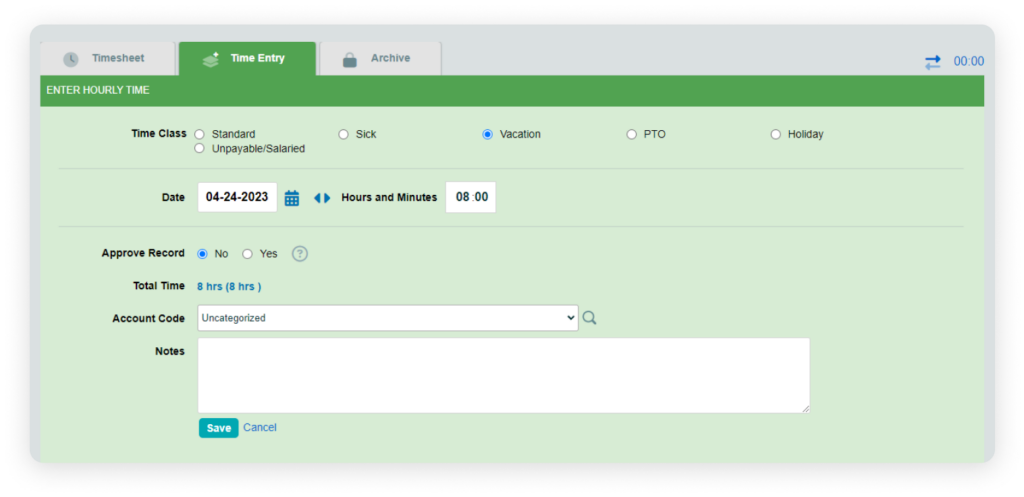As a personal or executive assistant managing schedules for executives and high-profile individuals, you’re all too familiar with the chaos that can ensue when trying to coordinate complex schedules and handle unexpected changes. But what if you could transform this daily struggle into a well-oiled machine of efficiency?
The executive time management challenge is multifaceted and ever-evolving. At its core, it’s about balancing the urgent with the important, the planned with the unexpected, and the professional with the personal. Executives are pulled in countless directions, each demanding immediate attention and promising high stakes outcomes. For a deeper understanding of how to tackle these challenges, consider exploring scheduling for businesses.
Did you know? According to a study by Harvard Business Review, executives spend an average of 23 hours per week in meetings, leaving precious little time for focused work and strategic thinking.
This statistic underscores one of the primary challenges: the constant battle against time fragmentation. With nearly 60% of a 40-hour work week consumed by meetings, finding uninterrupted time for deep work, strategic planning, and decision-making becomes a Herculean task.
Moreover, the nature of executive work is inherently unpredictable. Market shifts, client emergencies, or internal crises can upend even the most meticulously planned schedule in an instant. As a personal assistant, you’re not just managing time – you’re managing chaos, expectations, and sometimes, the impossible. For additional insights, explore how freelance project management can support managing time-sensitive projects and unexpected shifts in business priorities.
Another critical aspect of this challenge is the ripple effect of executive decisions. Time allocated (or misallocated) at the top echelons of an organization cascades down, affecting team productivity, project timelines, and ultimately, the company’s bottom line. This adds an extra layer of pressure to ensure that every minute of an executive’s time is optimized for maximum impact.
Furthermore, in our hyperconnected world, the lines between work and personal life are increasingly blurred. Managing an executive’s time often extends beyond the 9-to-5, encompassing personal lives, family time, and necessary downtime – all crucial for maintaining long-term productivity and well-being.
As a personal assistant, your role is crucial in navigating these turbulent waters with effective time management strategies. You are the gatekeeper, the optimizer, and often, the voice of reason in the whirlwind of executive life. Your ability to anticipate needs, prioritize effectively, and create structure amidst chaos can make the difference between an executive who is constantly firefighting and one who is strategically steering their organization towards success.
In the following sections, we’ll delve into strategies and tools that will empower you to master these challenges, transforming executive time management from a daily struggle into a streamlined, effective process.
Key Takeaways
- Implement a dynamic priority matrix to handle task urgency and importance.
- Master the art of time blocking for enhanced focus and productivity.
- Develop a proactive approach to anticipate and manage schedule changes.
- Cultivate effective communication channels between executives and stakeholders.
- Prioritize self-care to maintain your own productivity and effectiveness.
Index Table
- The Power of Priority: Implementing the Eisenhower Matrix
- Time Blocking: Maximizing Focus and Productivity
- Anticipating and Managing Change: The Proactive Approach
- Effective Communication: The Key to Seamless Scheduling
- Self-Care for Personal Assistants: Maintaining Your Own Productivity
- Conclusion: Where Good Time Management Practices Can Take You
The Power of Priority: Implementing the Eisenhower Matrix
In the whirlwind of executive life, how do you determine what on your to do list truly matters? Enter the Eisenhower Matrix, a powerful tool for prioritizing tasks based on urgency and importance. Named after President Dwight D. Eisenhower, this matrix helps cut through the noise and focus on what truly drives results.
The Eisenhower Matrix divides tasks into four quadrants based on two criteria: urgency and importance. This simple yet effective categorization allows for quick decision-making and efficient time allocation.
The Four Quadrants
- Here’s how to implement the matrix:Urgent and Important: These tasks require immediate attention. Schedule them as soon as possible.
- Important but Not Urgent: Block out dedicated time for these tasks to prevent them from becoming urgent.
- Urgent but Not Important: Delegate these tasks whenever possible.
- Neither Urgent nor Important: Eliminate these tasks from the schedule.
Applying the Matrix to Executive Schedules
Quadrant 1: Do First
These are critical, time-sensitive tasks. They might include crisis management, imminent deadlines, or pivotal meetings. Ensure these tasks are given top priority in the executive’s schedule.
Quadrant 2: Schedule
This quadrant is where real progress happens. It includes strategic planning, relationship building, and personal development. Make sure you schedule time for these activities.
Quadrant 3: Delegate
Many tasks that seem urgent can often be handled by others. Train yourself to delegate tasks appropriately, freeing up the executive’s time for more critical work.
Quadrant 4: Eliminate
Be ruthless with this quadrant. These activities often masquerade as work but contribute little to long-term goals. Help your executive identify and eliminate these time-wasters.
Implementing the Matrix Daily

Make the Eisenhower Matrix a part of your daily routine:
- Start each day by categorizing incoming tasks and requests.
- Regularly review ongoing projects and reassess their placement in the matrix.
- Use the matrix to justify scheduling decisions when communicating with stakeholders.
Overcoming Common Challenges

- Misclassification: Regularly discuss priorities with your executive to ensure accurate task classification.
- Overcommitment: Even with proper prioritization, it’s possible to overcommit. Use the matrix to justify saying ‘no’ to low-priority requests.
- Neglecting Quadrant 2: Important but not urgent tasks are often neglected. Make a conscious effort to allocate time for these critical activities.


Boost Efficiency
Dive into a Free Trial Today!
Time Blocking: Maximizing Focus and Productivity
Time blocking is a game-changer in executive time management. This technique involves dividing the day into blocks of time, each dedicated to specific tasks or types of work. By creating a visual and temporal structure for the day, time blocking enhances focus, reduces decision fatigue, and boosts overall productivity.
Research in cognitive psychology shows that our brains perform best when focused on a single task. Multitasking, contrary to popular belief, can reduce productivity by up to 40%. Time blocking leverages this insight by creating dedicated periods for deep, focused work.

Implementing Time Blocking for Executives

- Start with Core Blocks: Begin by scheduling non-negotiable, crucial activities. These might include board meetings, investor calls, or strategic planning sessions.
- Schedule Focused Work: Allocate substantial blocks (ideally 90-120 minutes) for deep work. This is where strategic thinking, problem-solving, and creative tasks happen.
- Add Administrative Time: Set aside time for emails, brief meetings, and other administrative tasks. These can be shorter blocks, perhaps 30-60 minutes.
- Include Buffer Time: Add 15-30 minute buffers between blocks. These act as shock absorbers for unexpected issues and prevent cascading delays.
5. Don’t Forget Personal Time: Schedule breaks, lunch, and even personal activities. Remember, an executive who’s all work and no play won’t be effective in the long run.
Flexible vs. Rigid Time Blocking
- Use color codes for different types of activities (e.g., blue for focused work, red for meetings)
- Keep a “flex block” each day for unexpected high-priority tasks
- Review and adjust blocks weekly based on changing priorities
Overcoming Time Blocking Challenges

- Interruptions: Train stakeholders about the executive’s time blocking system. Use it as a tool to manage expectations and reduce unnecessary interruptions.
- Overcommitment: Be realistic when creating blocks. It’s better to under-schedule and over-deliver than the reverse.
- Resistance to Structure: If your executive resists strict scheduling, start with loose time blocks and gradually increase structure as they see the benefits.
Did you know? Elon Musk is known for using a time-blocking technique where he schedules his day in five-minute increments!
By implementing time blocking, you’ll help your executive maintain focus, achieve deep work, and strike a balance between different types of tasks. This leads to increased productivity, better decision-making, and ultimately, greater job satisfaction for both the executive and you as their indispensable personal assistant.
Anticipating and Managing Change: The Proactive Approach
In the dynamic world of executive management, change is the only constant. Developing a proactive approach to anticipate and manage these changes is crucial for effective time management. As a personal assistant, your ability to foresee potential disruptions and adapt quickly can make the difference between a day of chaos and a day of productive flow.
Being proactive means more than just reacting quickly—it’s about creating systems and mindsets that anticipate change. This approach not only minimizes disruptions but also transforms potential obstacles into opportunities for efficiency.

Strategies for Anticipating Change

- Regular Schedule Reviews: Set aside time weekly to review upcoming commitments. Look for potential conflicts, tight transitions, or overbookings. This bird’s-eye view allows you to spot and address issues before they become urgent.
- Stakeholder Check-ins: Regularly touch base with key stakeholders (team members, clients, partners) to stay ahead of developing situations that might impact the executive’s schedule.
- Industry Awareness: Stay informed about industry trends and news. Many schedule changes are driven by external factors, and being aware of these can help you anticipate potential impacts.
4. Pattern Recognition: Over time, you’ll start to recognize patterns in schedule disruptions. Use this knowledge to proactively plan for similar situations in the future.
Techniques for Managing Change

- Contingency Planning: Always have a Plan B (and C) for important meetings or events. This might involve having backup time slots, alternative venues, or virtual meeting options at the ready.
- Flexible Buffers: Build in flexible time slots that can be used to accommodate last-minute changes. These buffers act as shock absorbers for your schedule.
- Prioritized Waitlist: Maintain a list of lower-priority tasks that can be slotted in when unexpected free time arises due to cancellations or changes.
- Clear Communication Protocols: Establish clear channels for communicating urgent changes. This might include priority flags for emails or dedicated messaging platforms for immediate attention.
5. Delegation Network: Develop a reliable network of individuals who can step in to handle tasks or attend meetings if the executive is unexpectedly unavailable.
Remember, the goal isn’t to predict every possible change, but to create a system flexible enough to adapt when changes occur. Cultivate an agile mindset that sees change not as a disruption, but as an expected part of the executive lifestyle.
Pro Tip: After each significant schedule change, take a moment to reflect. What signs, if any, preceded the change? How was it handled? What could be done differently next time? This continuous learning approach will refine your change management skills over time.
By implementing these strategies, you’ll transform from a reactive schedule manager to a proactive change anticipator. This shift not only reduces stress for both you and your executive but also ensures that even in the face of constant change, productivity and strategic focus are maintained.

Effortless Time Management
Get Started with a Free Trial!
Time Blocking: Maximizing Focus and Productivity
Effective communication goes beyond simply relaying messages. It involves:
- Ensuring clarity and avoiding misunderstandings
- Managing expectations of all parties involved
- Facilitating quick decision-making
- Creating a buffer between the executive and unnecessary interruptions

Establishing Clear Communication Channels

- Define Preferred Methods: Establish clear channels for different types of communication. For instance, use email for non-urgent matters, instant messaging for quick questions, and phone calls for emergencies.
- Create a Communication Hierarchy: Develop a system that prioritizes messages based on urgency and importance. This could involve using specific subject line prefixes or color-coding messages.
- Standardize Meeting Requests: Create templates for meeting requests that include all necessary information (purpose, attendees, preparation required, etc.) to streamline the decision-making process.
Regular Check-ins and Updates
- Executive Check-ins: Schedule brief, regular check-ins with your executive to align on priorities and upcoming commitments. This ensures you’re always on the same page.
- Stakeholder Management: Maintain open lines of communication with key stakeholders. Regular updates can help manage expectations and handle scheduling requests efficiently.
- Team Briefings: If you’re part of a larger executive support team, regular team meetings can ensure everyone is aligned on the executive’s priorities and schedule.
Mastering the Art of Saying 'No'
- Understanding the executive’s priorities to make informed decisions
- Offering alternatives when declining requests
- Communicating refusals diplomatically but firmly
Documentation and Follow-up
- Keep Clear Records: Maintain accessible records of decisions made and commitments agreed upon. This reduces misunderstandings and provides a reference point for future communications.
- Follow-up Communications: After meetings or important decisions, send concise follow-up emails summarizing key points and next steps.
Pro Tip: Develop a system of shorthand or codes with your executive for quick, efficient communication about schedule changes or priorities. This can be especially useful in time-sensitive situations.

Self-Care for Personal Assistants: Maintaining Your Own Productivity
- Burnout becomes a real risk.
- Decision-making abilities can be compromised.
- Efficiency and attention to detail may suffer.
- Physical and mental health can decline.
- Working memory may be diminished.

Applying the Matrix to Executive Schedules
1. Set Clear Boundaries:
- Clearly define your working hours and stick to them whenever possible.
- Learn to say ‘no’ to requests that fall outside your role or capacity.
- Communicate your boundaries respectfully but firmly to your executive and colleagues.
2. Prioritize Physical Health:
- Maintain a regular sleep schedule.
- Make time for exercise, even if it’s just a short daily walk.
- Eat nutritious meals and stay hydrated throughout the day.
3. Mental Well-being:
- Practice stress-reduction techniques like meditation, deep breathing, or mindfulness.
- Consider therapy or counseling to manage work-related stress.
- Engage in hobbies or activities that bring you joy outside of work.
4. Continuous Learning and Growth:
- Stay updated with the latest time management techniques and tools.
- Attend workshops or webinars on personal development.
- Read books or listen to podcasts on productivity and well-being.
5. Build a Support Network:
- Connect with other personal assistants to share best practices and support each other.
- Maintain relationships outside of work for a balanced perspective.
- Consider joining professional associations for networking and resources.
Implementing Self-Care in Your Daily Routine
1. Schedule ‘Me Time’: Block out time in your calendar for self-care activities, just as you would for any other important appointment.
2. Regular Check-ins: Periodically assess your stress levels and overall well-being. Be proactive in addressing any issues before they escalate.
3. Use Your Own Tools: Apply the time management techniques you use for your executive to your own life and work.
4. Celebrate Small Wins: Acknowledge your accomplishments, no matter how small. This boosts motivation and job satisfaction.
Remember: You can’t pour from an empty cup. Taking care of yourself isn’t just beneficial for you—it’s crucial for your ability to support your executive effectively.
By implementing these self-care strategies, you’ll not only improve your own well-being but also enhance your capacity to manage executive time efficiently. A well-rested, balanced, and motivated personal assistant is an invaluable asset to any executive and organization.
Conclusion: Where Good Time Management Practices Can Take You

Unlock Productivity
Begin Your Free Trial Now!








